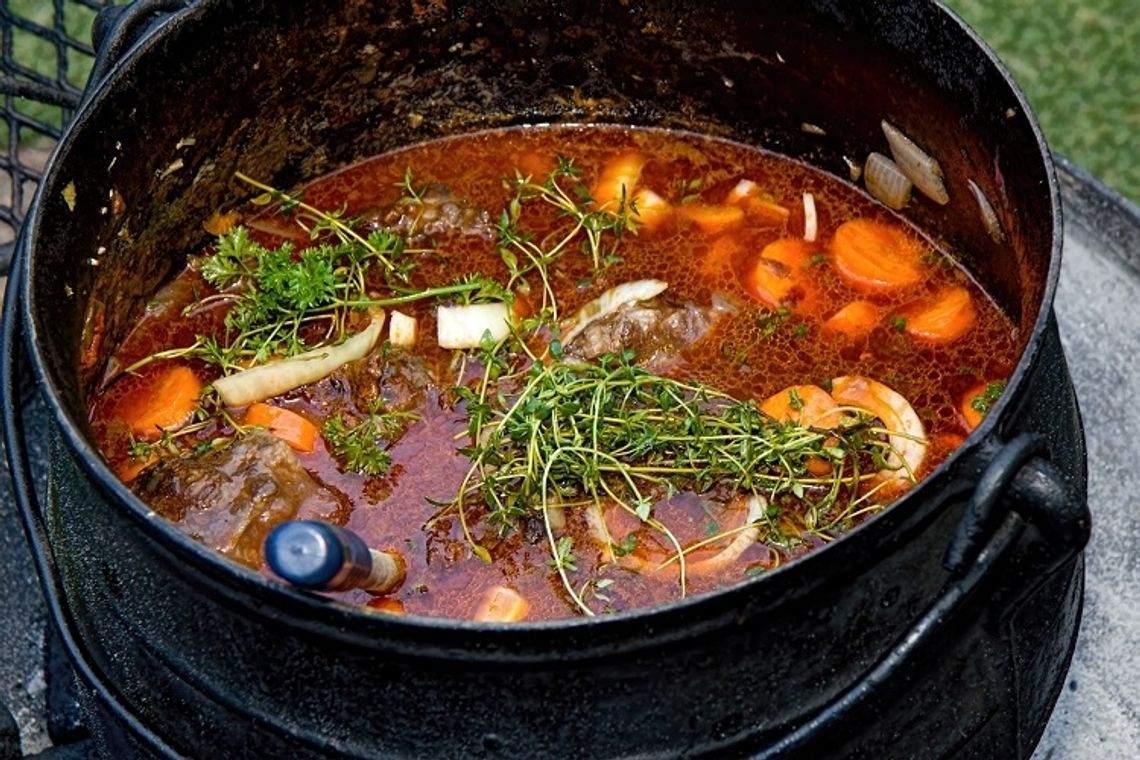This week, I could not stop thinking about pot roast. At its most basic, pot roast is a tough cut of meat that is cooked in a moist environment for long enough that it turns tender and delicious. It is a truly American dish arising from a mishmash of culinary techniques and traditions that were brought to our newly formed country with immigrants from France, Germany, Russia, Hungary, and Austria. When you add carrots and other root vegetables, the name is Yankee Pot Roast.
You take a tough cut of meat that would be terribly prepared on the grill or dry roasted in the oven and you unlock the magic within by adding a few easy steps.
With modern technology, the connective tissue in a chuck steak, seven-bone roast, or short ribs will happily transition to gelatin (ahem, god’s butter) while you are away from the house running holiday errands or toiling at work. In a pinch, an electric pressure cooker enables the preparation of a passable pot roast in as little as 90 minutes, though I avoid this sacrilegous practice.
On the culinary side, there are a couple of fancy terms that explain what happens when you cook a pot roast. Braise is a combination cooking method that involves both dry and wet heat. Braising is similar to stewing except less liquid is used and the piece of meat is generally larger, think roast vs. stew meat.
A Maillard Reaction happens when heat is applied to something that has amino acids and sugar. The heat causes the sugars and amino acids to reorganize themselves into shimmery rings creating new flavor compounds and turning the surface brown. You see the results of the Maillard Reaction when you sear a steak or toast bread.
While these terms might sound complicated or fancy, there is nothing that makes a pot roast hard to make. My approach to braising is slow and measured. Layer flavors one on top of the other and then allow everything to develop and meld over time.
My last little tidbit of culinary wisdom regarding a braised pot roast is that the technique and the time are the most important factors. You can change this recipe in so many ways to make it your own. Want to peel your veggies, do it. Want a different cut of meat, no worries. Don’t like carrots, don’t use them. Make it as simple or complex as you like because a pot roast should reflect the person who made it and the family that eats it.
Pot Roast
INGREDIENTS:
3lb beef (a tough cut; e.g. chuck roast, 7-bone roast, short ribs, oxtail, brisket, flat iron roast)
Salt and pepper
3 T canola oil
4 T butter
2 Onions (any color or an equivalent amount of cippolini or pearl onions) cut into large chunks
3 lb root vegetables (carrots, parsnips, rutabagas, turnips, potatoes, etc) cut into large chunks
8 mushrooms cut in half - optional
1 head of garlic - top cut off
¾ c tomato paste
Herbs (bay leaves, rosemary, thyme)
1 ½ c red wine
3-4 cups beef broth
DIRECTIONS:
1. Preheat oven to 350 degrees. Generously season meat on both sides with salt and pepper. On the stovetop, heat oil over medium-high heat in a dutch oven or other heavy-bottomed, oven-friendly cooking vessel with a lid. When the oil is shimmery, gently add your roast. Let cook without fussing until it is well seared, 3 to 7 minutes. Flip the roast over and sear the other side. Remove meat to a plate.
2. Reduce heat to medium and add butter, add garlic, and root vegetables. Stir regularly, scraping the bottom of the pot until the vegetables get nice and golden brown, 8 to 10 minutes.
3. Add tomato paste and stir frequently until the mix darkens slightly about 5 minutes.
4. Add herbs and wine and cook, stirring occasionally until the liquid has reduced to the consistency of a thick gravy, about 7-10 minutes.
5. Return meat to the pot, add broth, cover with a lid, and transfer to the oven. Let cook for 2½ hours. Remove from oven and let sit on the stove undisturbed for at least 15 minutes.
6. Put the meat on a cutting board. Discard bay leaves and any herb stems you encounter. Squeeze out any garlic that remains in the skins into the stew and discard the skins. Slice the meat across the grain and serve in a bowl with root vegetables and a generous amount of the cooking liquid.








































Comment
Comments